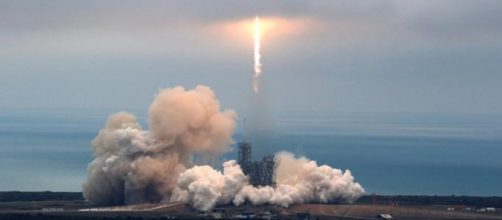Students of modern history and space sciences would know about the space programs of two nations as they once raced to become the first country to put men on the moon. This was achieved by the US through NASA’s Apollo program, which was canceled before its planned max number of lunar missions due to cost, what with each delivery vehicle – the Saturn V – being a one-use throwaway vessel.
Reusable spacecraft became the preferred route with the space shuttle, yet costs were still prohibitive. In this age of private space transport companies, the idea of a reusable rocket vehicle has become the trend, with Elon Musk’s SpaceX making the most headway in this direction.
Despite several past frustrations, Musk proved his concept and design to be sound with a successful rocket launch and stage-landing last Sunday, February 19.
Historic Launchpad
For visionary Elon Musk, the launch was a vindication of his SpaceX Company’s workhorse rocket the Falcon 9, which features a reusable first stage rocket engine that, upon being cast off in a launch, will fire up its thrusters to make a vertical landing on a solid surface.
While the concept has worked in tests more than it failed, there was a major setback in the Falcon 9’s reputation when one such rocket exploded in September 2016, destroying the satellite it was carrying. This time, however, the delivery vehicle would prove its worth in spectacular fashion.
— Elon Musk (@elonmusk) February 19, 2017
There was certainly a lot of attention on this SpaceX launch, which will have a Falcon 9 carry a Dragon cargo rocket with vital supplies to the International Space Station (ISS). The launch will be at Cape Canaveral, with the rocket set at NASA’s Kennedy Space Center Launchpad 39A, a historic location for US space travel.
Pad 39A was where the Apollo missions that went to the moon launched and later served the same purpose for the space shuttle fleet. It was last used back in 2011 when it launched shuttle Atlantis on the final flight of the shuttle program. Despite a 24-hour launch delay after fixing some system problems, as well as dark clouds during Sunday, Musk’s Falcon 9 lifted off without any incident with its payload, much to the excitement of assembled onlookers.
Successful return
What happened next was one for the record books and a big boost to SpaceX’s reputation. As the rocket’s second stage and the Dragon capsule hurried on towards its destination, the jettisoned first stage flew back vertically down to Cape Canaveral and landed straight on the landing field of the nearby Air Force station.
That made it the eighth successful rocket recovery in 13 attempts, this one being for real and not a test, so all in all not bad. One can’t help but think that with this success Elon Musk will have a good showing for his new executive friend President Donald Trump, and the possibility of getting funding a future Mars space mission.

